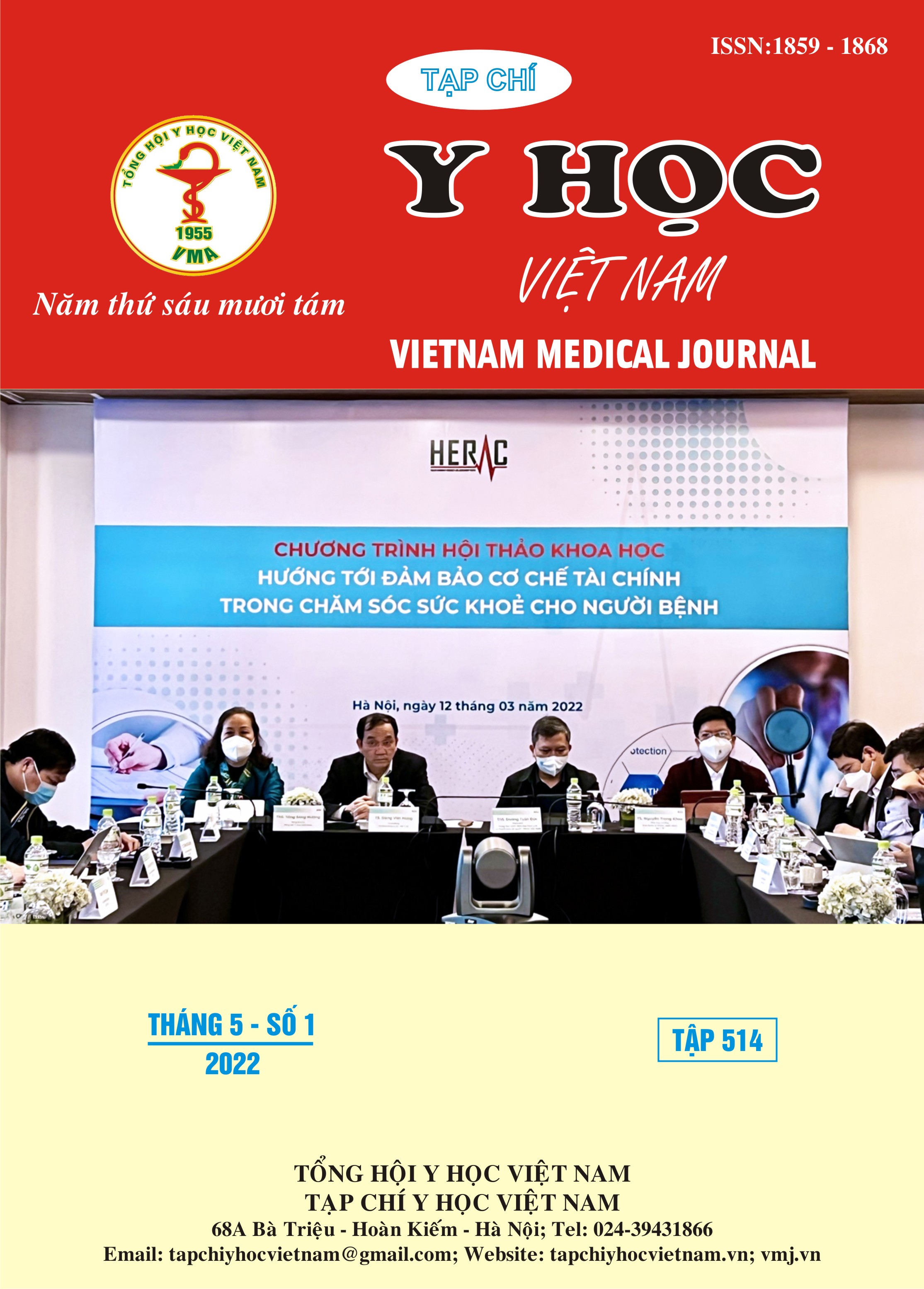RESEARCH ON SOME FACTORS RELATED TO EFFECTIVENESS OF TREATMENT OF UTERINE FIBROIDS BY UTERINE ARTERY EMBOLIZATION AT HAI PHONG HOSPITAL OF OBSTETRICS AND GYNECOLOGY
Main Article Content
Abstract
Currently, uterine artery embolization method helps patients reduce symptoms and volume of uterine fibroids without surgery. Objective: to study some factors related to the effectiveness of uterine volume reduction after 6 months of treatment. Subjects and methods: 63 patients were examined, diagnosed and treated for uterine fibroids at Hai Phong Obstetrics and Gynecology Hospital with indications for uterine artery embolization from October 2018 to June 2020. Results: Multivariate regression analysis showed factors (age, number of pregnancies, anteroposterior diameter oF Uterine, volume of uterine fibroids, location of uterine fibroids, node size, duration of time embolization) was not associated with a reduction in uterine volume < 50% after 6 months of treatment. Fibroid tumors with high angiogenesis had a higher success rate than fibroids with little or moderate angiogenesis by 1.5 times with p<0,05. Conclusion: Multivariable regression analysis showed that only uterine fibroid angiogenesis factor independently affected treatment outcome.
Article Details
Keywords
uterine artery embolization, uterine fibroids, relationship
References
2. Dương Thị Cương, Nguyễn Đức Hinh (1999), "U xơ tử cung", Phụ khoa dành cho Thầy thuốc thực hành, nhà xuất bản y học, tr. 88- 107.
3. Laurent Brunereau, Denis Herbreteau, Sophie Gallas, Jeam-philippe Cottier, Jean-Luclebrun, Francois Tranqant, FlorenceFanchier, Gilles Body and Philippe Rouleaus (2000,), "Uterine Artery Embolization in the primary Treatment of Uterine Leiomyomas", AJR. 175, tr. 1267-1272.
4. Pron G, Banett 3, Comanen A. Wall1, Asch M. Stidennan K for the Ontario Fibrod Embolization Collaborative Group (2003), "Uterine fibroids reduction and symtoms relief after uterine artery embolization for fibroids", Fertil Steril 79:, tr. 120-7.
5. Watson GMT, Walker WJ (2002), "Uterine artery embolisation for treatment of symptomatic fibroids in 114 women, reduction in size of fibroids and women's views of success of the treatment", Br J Obstet Gynaecol 2002; 109: 129-35. 109, tr. 129-35.
6. Bapuraj JR, Suri S, Sidhu R et al (2002), "Uterine embolisation for the treatment of symptomatic uterine fibroids: short-term results of work in progress", Aust NZJ Obstet Gynaecol. 42:, tr. 508-12.
7. Lê Lệnh Lương, Nguyễn Văn Sơn (2011), "Đánh giá kết quả bước đầu kĩ thuật nút mạch trong điều trị UXCTC tại Bệnh viện Thanh Hóa", Tạp chí Điện quang Việt Nam, tr. 120-125.
8. Isonishi, Seiji và các cộng sự. (2008), "Analysis of prognostic factors for patients with leiomyoma treated with uterine arterial embolization", American journal of obstetrics and gynecology. 198(3), tr. 270.e1-6.
9. Jha RC, Ascher SM, Imaoka I, Spies JB (2000), "Symptomatic fibroleiomyomata: MR imaging of the uterus before and after uterine arterial embolization", Radiology, tr. 228-235.


